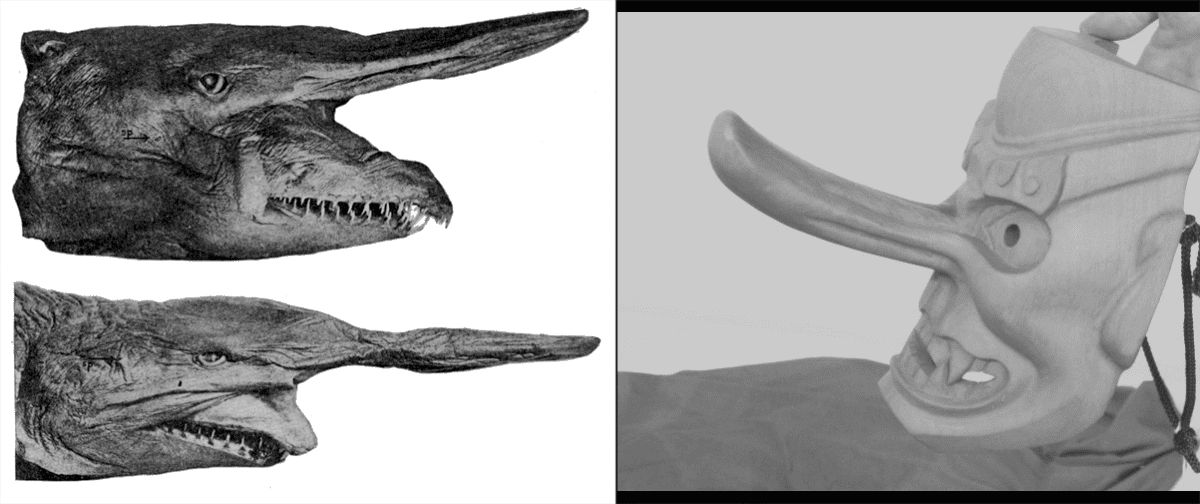October 27, 2017
Shark FRIGHT Friday: Goblin Sharks are Un-BOO-lievable
Welcome to Shark Fact Friday, a (mostly) weekly blog post all about unique sharks and what makes them so awesome. This week’s post features the most appropriate shark for Halloween: a long-nosed shark with a mouth that can shoot forward to catch prey, translucent skin that reveals blood vessels underneath that give it a pinkish tone, and beady black eyes with bright blue streaks. Sound spooky? Nah, it’s just the goblin shark.
The goblin shark got its name from an interpretation of the Japanese word for this species: tenguzame. Tengu is a reference to a Japanese folk creature that is part bird and part human, and zame translates to shark. The name is likely inspired by the most distinctive feature of the goblin shark – it’s weird, protruding, flat nose which looks like a beak or a traditional tengu mask.

This species is found in very deep water and is rarely encountered, so scientists don’t know much about their biology or habits. However, we do know that their weird schnoz is covered in pores leading to a sensory system designed to pick up on electrical signals from prey. It is hypothesized that the elongated snout serves to increase the surface area these sharks can use to pick up on these signals, since they live where light is scarce. Finding prey by sight for goblin sharks is extremely difficult, if not impossible.

The goblin shark is known for one other feature as well: their extremely extendable jaws. These creatures of the deep can project their jaws forward at a speed of nearly 7 miles per hour and more than 9 percent of their total body length! If that sounds creepy, it honestly is. However, scientists think that this feature may be because goblin sharks might not encounter food very often in the deep and want to make the most of every bite. Take a look at these jaws in action in the video below.

The goofy looking goblin shark has been reported in nearly every ocean, but is quite rarely seen by humans. Most of those that get reported are caught accidentally in deep-sea longlines or trawls, like the 18-foot-long specimen caught off the Florida Keys by a shrimp fisherman in 2014.
If you’re interested in seeing more goblin shark footage, be sure to check out Discovery Channel’s Alien Sharks: Stranger Fins, which was featured this year on Shark Week!
MOST RECENT
September 3, 2025
Air Raid Panic to Informed Skies and Seas: The National Weather Service in a Nutshell
August 29, 2025
August 22, 2025
Corals, Community, and Celebration: Oceana Goes to Salmonfest!



